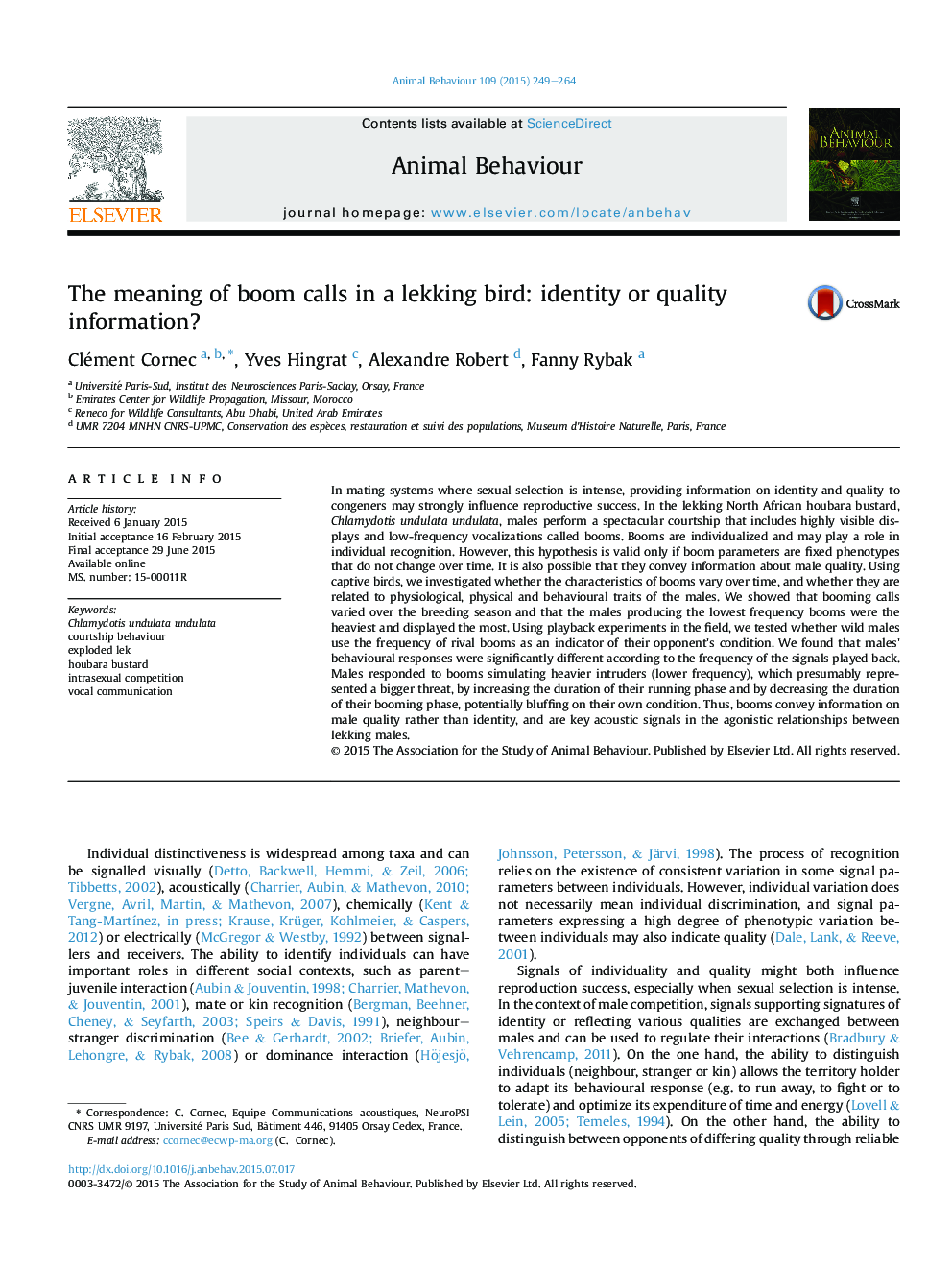| کد مقاله | کد نشریه | سال انتشار | مقاله انگلیسی | نسخه تمام متن |
|---|---|---|---|---|
| 8489638 | 1552219 | 2015 | 16 صفحه PDF | دانلود رایگان |
عنوان انگلیسی مقاله ISI
The meaning of boom calls in a lekking bird: identity or quality information?
ترجمه فارسی عنوان
معنای رونق تماس در یک پرنده لکینگ: هویت یا اطلاعات کیفی؟
دانلود مقاله + سفارش ترجمه
دانلود مقاله ISI انگلیسی
رایگان برای ایرانیان
کلمات کلیدی
موضوعات مرتبط
علوم زیستی و بیوفناوری
علوم کشاورزی و بیولوژیک
علوم دامی و جانورشناسی
چکیده انگلیسی
In mating systems where sexual selection is intense, providing information on identity and quality to congeners may strongly influence reproductive success. In the lekking North African houbara bustard, Chlamydotis undulata undulata, males perform a spectacular courtship that includes highly visible displays and low-frequency vocalizations called booms. Booms are individualized and may play a role in individual recognition. However, this hypothesis is valid only if boom parameters are fixed phenotypes that do not change over time. It is also possible that they convey information about male quality. Using captive birds, we investigated whether the characteristics of booms vary over time, and whether they are related to physiological, physical and behavioural traits of the males. We showed that booming calls varied over the breeding season and that the males producing the lowest frequency booms were the heaviest and displayed the most. Using playback experiments in the field, we tested whether wild males use the frequency of rival booms as an indicator of their opponent's condition. We found that males' behavioural responses were significantly different according to the frequency of the signals played back. Males responded to booms simulating heavier intruders (lower frequency), which presumably represented a bigger threat, by increasing the duration of their running phase and by decreasing the duration of their booming phase, potentially bluffing on their own condition. Thus, booms convey information on male quality rather than identity, and are key acoustic signals in the agonistic relationships between lekking males.
ناشر
Database: Elsevier - ScienceDirect (ساینس دایرکت)
Journal: Animal Behaviour - Volume 109, November 2015, Pages 249-264
Journal: Animal Behaviour - Volume 109, November 2015, Pages 249-264
نویسندگان
Clément Cornec, Yves Hingrat, Alexandre Robert, Fanny Rybak,
